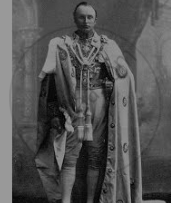Advertisements
Advertisements
प्रश्न
Anti-Partition Agitation of 1905 was essentially aimed at undoing the Partition of Bengal. In this context what limitations did the agitation suffer?
उत्तर
The Anti-Partition Agitation suffered from many limitations which are often described as causes of the failure of the Movement. First of all the agitationists though spoke about overthrowing the British, they had no plan to provide any alternative Government in India. The Swadeshi and Boycott Movement focused only on economic aspects of the programme. It was not used as a political weapon to destabilise the Government. It had the potential of causing such a Revolution but nothing of that sort was done. Even the Congress remained a divided house between the Moderates and Assertives and the doors had finally to be closed to the Assertives at the Surat session of the Congress in 1907. These limitations however don’t undermine the significance of the Anti-Partition Movement.
APPEARS IN
संबंधित प्रश्न
What was the General Service Enlistment Act?
What reason was given for the partition of Bengal by the British?
Or
How did Lord Curzon justify the Partition of Bengal?
Why were the people from Bengal opposed to its partition?
Who was Anandamohan Bose? For what is he remembered?
How did the ideas of Swadeshi help Indians to be united against the British?
How did the people express their unhappiness against this decision of the British.
Or
What was the reaction of the people to the partition?
Discuss how Curzon striked at the roots of Bengal nationalism to weaken the National Movement.
“Anti-Partition movement roused the national sentiments which led to the outbusst of revolutionary activity”. Discuss in brief.
Answer the following:

(i) Name the person in the picture given alongside.
(ii) Which event the person showing in the picture was associated with? What justification he give for that incident.
What justification did Lord Curzon give to the Indians for the Partition of Bengal?
